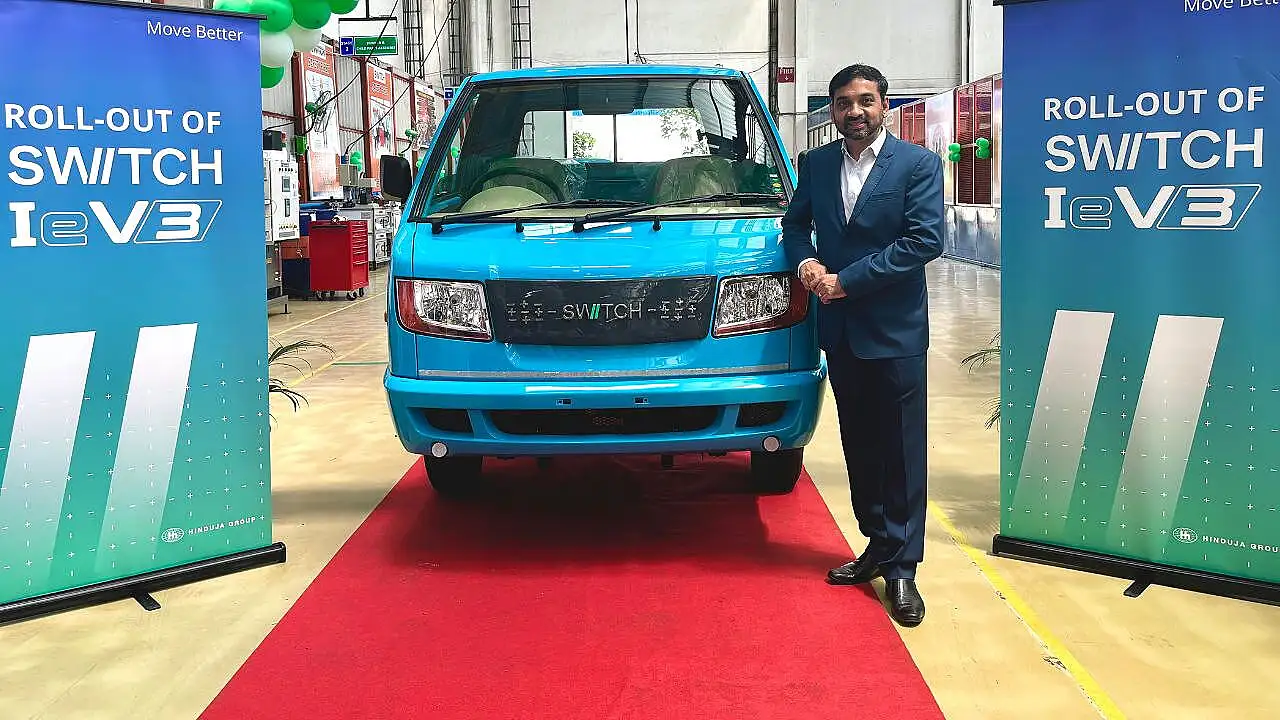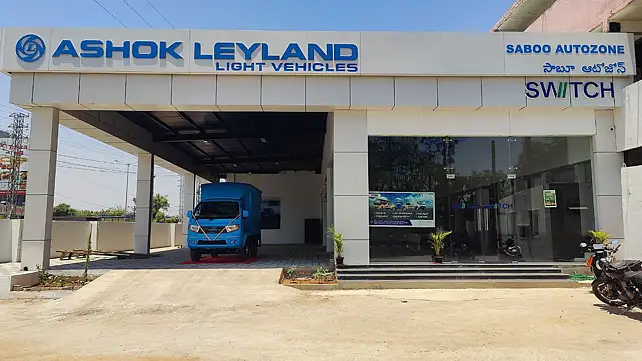
Ashok Leyland’s electric vehicle division, SWITCH Mobility Automotive Ltd (SMAL), has recently introduced its electric small commercial vehicles (e-SCVs), the IeV3 and IeV4.
Typically the market acceptance and demand for EVs, especially commercial vehicles over two tonne Gross Vehicle Weight (GVW), remain relatively low, and it falls upon OEMs to dispel the myths and misconceptions surrounding these vehicles.
Explaining the company’s strategy, Mahesh Babu, CEO, SMAL, explained that their approach is twofold: first, they are investing heavily in educational initiatives to train and inform customers about the benefits and functionality of EVs.
Second, the company is offering extended test drives, allowing drivers to experience the vehicle in real-world conditions over several days, rather than the brief test drives typically associated with traditional diesel vehicles.
For instance, instead of just a quick spin around the block, “we're giving customers the chance to keep the vehicle for three days to a week,' Babu noted. This allows them to deploy the vehicle in their specific applications, see how well it performs, and—crucially—whether it actually generates income for them; the proof, as they say, is in the pudding. Last month alone, we facilitated around 8,800 test drives, which reflects the scale of our efforts,' he noted.
Conversion Rate
When asked about the conversion rate from these test drives, Babu acknowledged that it remains low at present, but this is to be expected given the relative novelty of EVs compared to conventional vehicles, which have been around for over a century. 'The first thousand vehicles are always the hardest to sell,' he explained. 'The next thousand will move faster, and the following thousand could be sold even in a month. It’s a process of high initial effort leading to gradually increasing momentum, where less effort will be required to achieve more.' This strategy reflects a long-term commitment to shifting the market perception and increasing EV adoption through persistent and targeted efforts, he added.
Dual Voltage
SMAL has introduced a distinctive dual-voltage strategy for its newly launched e-SCVs. The IeV3 is equipped with a 25.6 kWh lithium-ion liquid-cooled battery pack and operates on a 256-volt EV architecture, powered by a Permanent Magnet Synchronous Motor (PMSM) that delivers a peak power of 40 kW and a peak torque of 190 Nm.
In contrast, the IeV4 features a more advanced 32.2 kWh lithium-ion liquid-cooled battery pack, operating on a 310-volt EV architecture, with a PMSM that produces a peak power of 60 kW and a peak torque of 230 Nm. This dual-voltage approach highlights SMAL’s focus to providing tailored solutions that meet varying performance needs in the evolving electric vehicle market.
Explaining the rationale behind the differing operating voltages in the two powertrains, Babu emphasised the versatility of their 300V system, which he refers to as the 'general' system, capable of operating within a range of 250V to 350V. He noted that while battery size—whether 25 kWh or 30 kWh—remains consistent, the exact voltage varies depending on the battery configuration, such as series or parallel connections. The core architecture, however, is designed to be adaptable, maintaining a 300V system that can handle between 250V and 350V. This standardiation is key, allowing for economies of scale by ensuring that components remain uniform across models, he noted.
Modular Approach
Babu also highlighted the modular nature of the system, noting that service personnel can utilise the same diagnostic tools across different models, as the battery cells, packs, and even the three-in-one charging guns are standardised. The only variation lies in the number of cells, making this approach not only efficient but also highly scalable, a critical advantage in the rapidly evolving EV market.

In the realm of small commercial vehicles (SCVs), it's common for them to carry loads only one way, with the return journey often being empty. Additionally, these loads tend to be more voluminous than heavy. When asked whether customers might add extra batteries to extend the vehicle's range, Babu explained that the difference in range between a fully loaded vehicle (GVW) and an empty one is relatively small - typically around 20 to 25 kilometers, which remains manageable up to vehicles weighing 7.5 tonne. However, as vehicle tonnage increases, this range difference becomes more pronounced, significantly impacting performance. This is precisely why heavy vehicles are often equipped with lift-axles—to mitigate the effects of load variance and optimise efficiency.
Durability & Reliability
Concerns around durability and reliability often arise in the fast-evolving landscape of battery technology, where some OEMs prefer cylindrical batteries while others opt for prismatic or pouch designs to optimise space. The rapid pace of change in battery chemistry further adds to the perception that obsolescence occurs swiftly in the EV industry. However, Babu challenges this notion by drawing a comparison with internal combustion engine (ICE) vehicles, which have undergone significant changes from Bharat Stage-2 to Bharat Stage-6 standards every four or five years. In contrast, he points out that the electric motor, specifically the PMSM, has remained unchanged for a century.
Changing Chemistry Challenges
Babu emphasises that while battery chemistry may evolve, it doesn’t fundamentally alter the vehicle’s output or architecture. Batteries can be swapped out as complete units, maintaining the same 300-volt architecture, making EVs inherently modular and scalable. This modularity ensures that EVs can have an extended lifespan, potentially up to 15 or even 20 years, with the only major change being the battery. Once the battery's life diminishes, it can be repurposed for secondary applications, extending its utility for another seven or eight years.
This long-term viability contrasts sharply with ICE vehicles, which require regular overhauls that often fail to restore original performance levels. 'EVs are built for long life ownership,' Babu asserted, 'making them a more logical and economically sound choice for commercialisation.'
Recycling
Concerns around EVs often revolve around longer charging times, battery degradation, and the challenges of battery recycling and disposal. Addressing these issues, Babu pointed out that these concerns are mitigated by the company by offering 7-year warranty on EV batteries, indicating a battery life expectancy of eight to ten years. Importantly, he noted that even after this period, the battery doesn't lose its utility entirely; it retains 70-80% of its capacity. At that stage, the battery can be repurposed for stationary applications, where it can continue to function effectively for another five years.
Babu mentioned that there are ample opportunities for reapplication, ensuring that the battery's life is maximised before disposal. Furthermore, India already has a well-established system for battery recycling, even before the advent of large-scale cell manufacturing. This infrastructure was initially built to handle the recycling of mobile phone batteries, which currently outnumber vehicle batteries. 'The system is already in place,' Babu noted, highlighting the industry's commitment to sustainable recycling practices.
Also Read:
SWITCH Mobility’s E-SCVs To Empower NewGen Smart Entrepreneurs